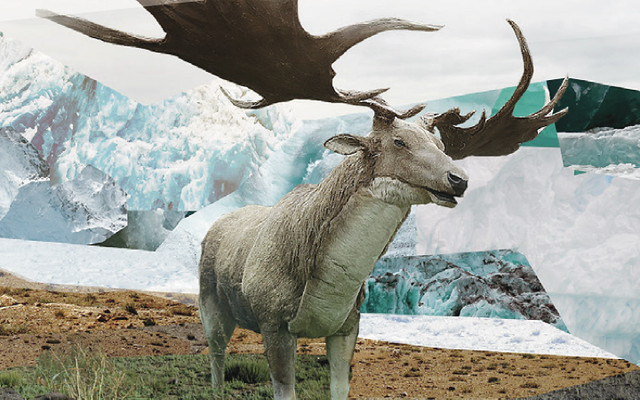The Irish elk (Megaloceros giganteus)[1][2] also called the giant deer or Irish giant deer, is an extinct species of deer in the genus Megaloceros and is one of the largest deer that ever lived. Its range extended across Eurasia during the Pleistocene, from Ireland to Siberia to China. A related form is recorded in China during the Late Pleistocene.[3] The most recent remains of the species have been carbon dated to about 7,700 years ago in Siberia.[4] Although most skeletons have been found in bogs in Ireland, the animal was not exclusive to Ireland and was not closely related to either of the living species currently called elk – Alces alces (the European elk, known in North America as the moose) or Cervus canadensis (the North American elk or wapiti). For this reason, the name “Giant deer” is used in some publications, instead of “Irish elk”.[5][6][7][8][9] A study has suggested that the Irish elk was closely related to the Red deer (Cervus elaphus).[10] However, other phylogenetic analyses support a sister-group relationship with fallow deer (Dama dama).[8][11][12]
The Irish elk stood about 2.1 metres (6.9 ft) tall at the shoulders carrying the largest antlers of any known cervid (a maximum of 3.65 m (12.0 ft) from tip to tip and weighing up to 40 kg (88 lb)). In body size, the Irish elk tied with the extant moose subspecies of Alaska (Alces alces gigas) as the third largest known deer, second and first belonging to the genus Cervalces (C. scotti and C.latifrons respectively). The Irish elk is estimated to have attained a total mass of 540–600 kg (1,190–1,323 lb). Large specimens weighed 700 kg (1,543 lb) or more, comparable with the Alaskan Moose.[16][17] A significant collection of M. giganteus skeletons can be found at the Natural History Museum in Dublin.
(From Wikipedia, May 2018)




